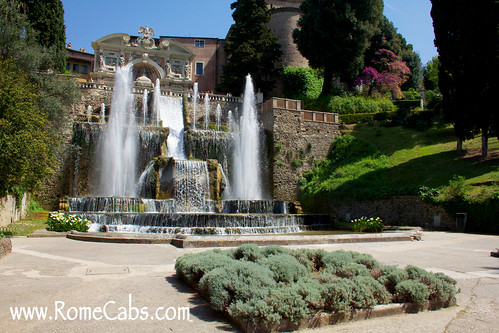Buongiorno and welcome to RomeCabs Italy Travel Blog! Located in the lower gardens of the magnificent Villa d’Este in Tivoli, the Fountain of Neptune stands as a grand testament to the innovative spirit of the Renaissance and the enduring allure of Italian artistry. This awe-inspiring water feature not only captivates visitors with its powerful jets and cascading waters but also tells a story of architectural evolution and cultural significance that spans several centuries.
In this blog, we take a closer look at Tivoli’s Fountain of Neptune. We will share with your some of the history of boty Fountain of Neputune and Villa d’Este, and we’ll also highlight some other must-see fountains in Villa d’Este you shouldn’t miss. Whether you’re planning a trip or just interested in Italy’s famous sites, we’ll show you why these fountains are essential stops on any visit to Villa d’Este.
The Cardinal’s Vision and Renaissance Splendor of Villa d’Este in Tivoli
Villa d’Este stands as a pinnacle of Italian Renaissance architecture and garden design, primarily crafted from the visionary mind of Cardinal Ippolito II d’Este. After an ambitious yet unsuccessful bid for the papacy, the Cardinal channeled his vast resources and profound cultural insight into creating an earthly paradise. This magnificent villa served not only as a sanctuary from the complex dynamics of ecclesiastical politics but also as a profound statement of his power and prestige.
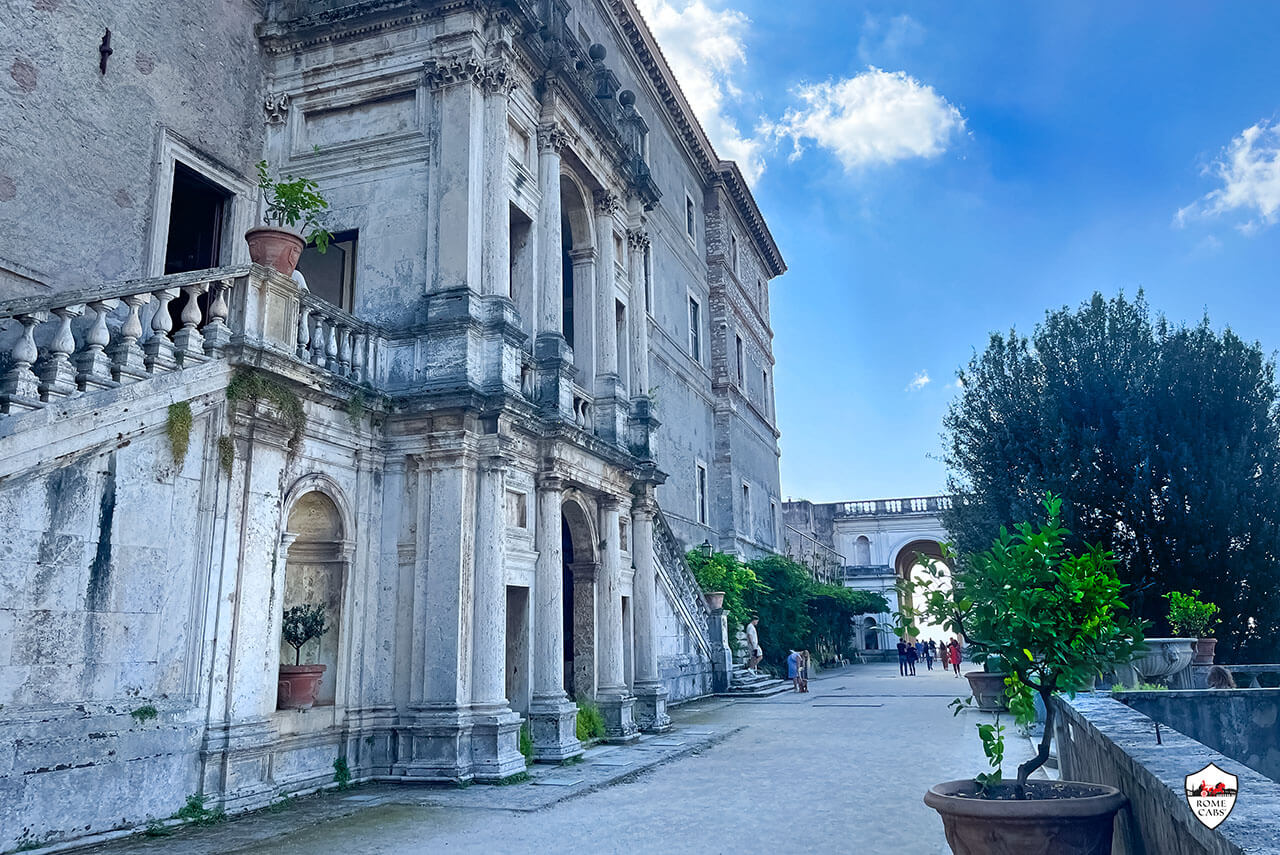
Constructed on the grounds of a former Benedictine convent, Villa d’Este was meticulously transformed under the Cardinal’s guidance into a sprawling complex that exudes innovative beauty and sophistication. Born into the influential Este family of Ferrara, Cardinal d’Este was a figure of immense wealth and cultural stature.
His deep appreciation for the arts was profoundly influenced by his time in Rome—a city rich with antiquities and vibrant Renaissance artistry under the generous patronage of the papal court.
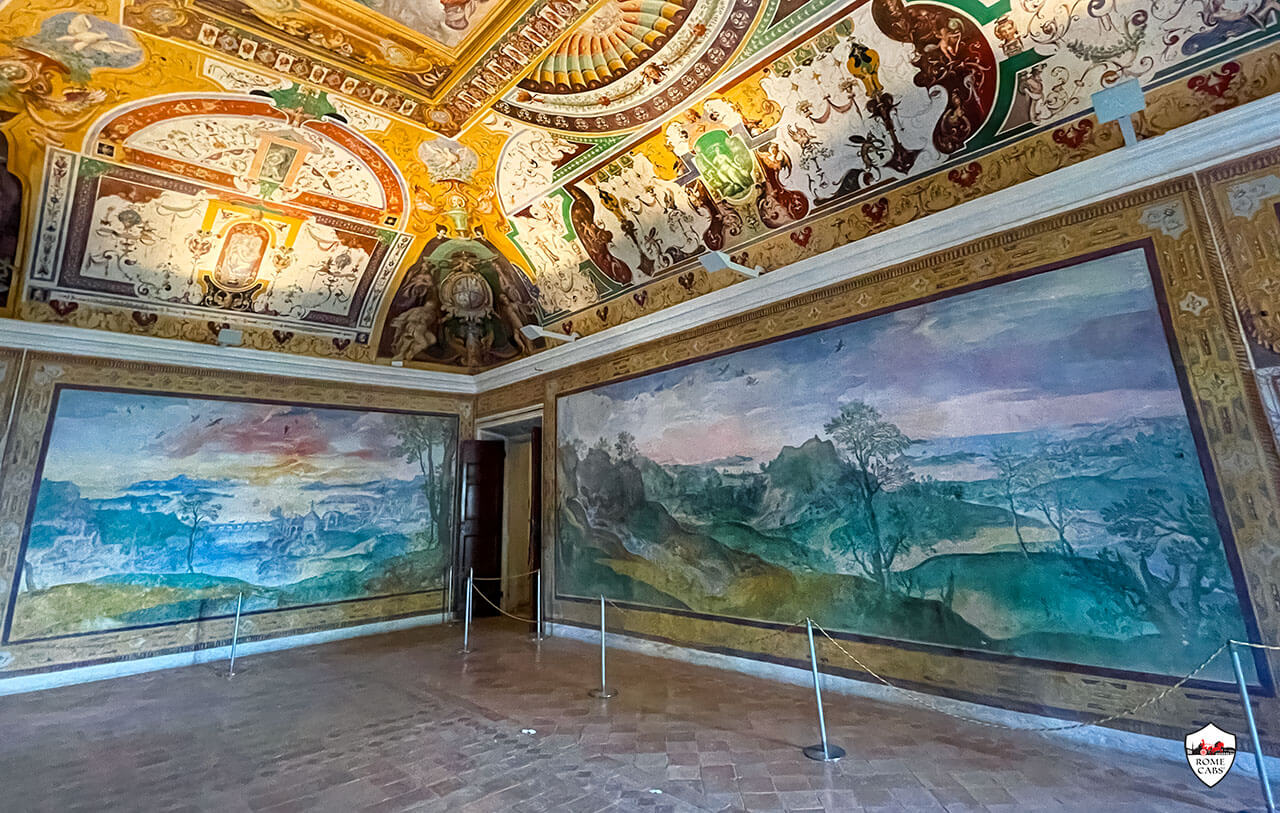
Moreover, Villa d’Este was conceived as a means to forge a legacy that would stand apart from his papal aspirations. By erecting such an opulent residence, he not only reaffirmed his status as a formidable patron of the arts but also established new standards in garden design and luxurious living. These standards would go on to shape the tastes and sensibilities of the European aristocracy for generations.
Today, Villa d’Este serves as a testament to Cardinal Ippolito II d’Este’s vision and the enduring splendor of the Renaissance. The villa remains a breathtaking example of how architecture, art, and engineering can converge to craft a space that not only transcends time but also celebrates the boundless creativity and quest for beauty that define the human spirit.

History of the Fountain of Neptune and its Architectural Evolution
Originally conceived in the 16th century by Pirro Ligorio for Cardinal Ippolito II d’Este, the Fountain of Neptune was part of a grand vision to transform a Benedictine monastery into a lavish villa that would reflect the cardinal’s power and artistic sensibilities.
Ligorio, a renowned architect and antiquarian who had a hand in several major projects including contributions to St. Peter’s Basilica, was tasked with creating a space that harmonized with the grandeur of ancient Roman villas. His design for the gardens of Villa d’Este was inspired by the classical Roman concepts of symmetry and splendor, with the Fountain of Neptune designed to serve as a dramatic focal point.

This transformation was not just a display of wealth or artistic passion; it was an embodiment of the Renaissance ideals of rebirth and humanism. The villa and its gardens were intended to be a microcosm of the perfect harmony between nature and human creativity, with the fountain providing a dynamic interplay of water and architecture that symbolized control and order over the natural world.
However, the vision that Ligorio set in motion would see significant evolution. In the 1930s, architect Attilio Rossi undertook a major redesign of the Fountain of Neptune. Rossi’s work, while modernizing the fountain, stayed true to its historical roots.
He incorporated cutting-edge hydraulic technologies of the time, which allowed for higher, more forceful jets of water and a more dramatic auditory experience. Rossi’s redesign transformed the fountain into a stunning visual and acoustic spectacle, with towering jets of water choreographed to create what could be likened to a ballet of aquatic movements, mesmerizing visitors and drawing their eyes skyward.
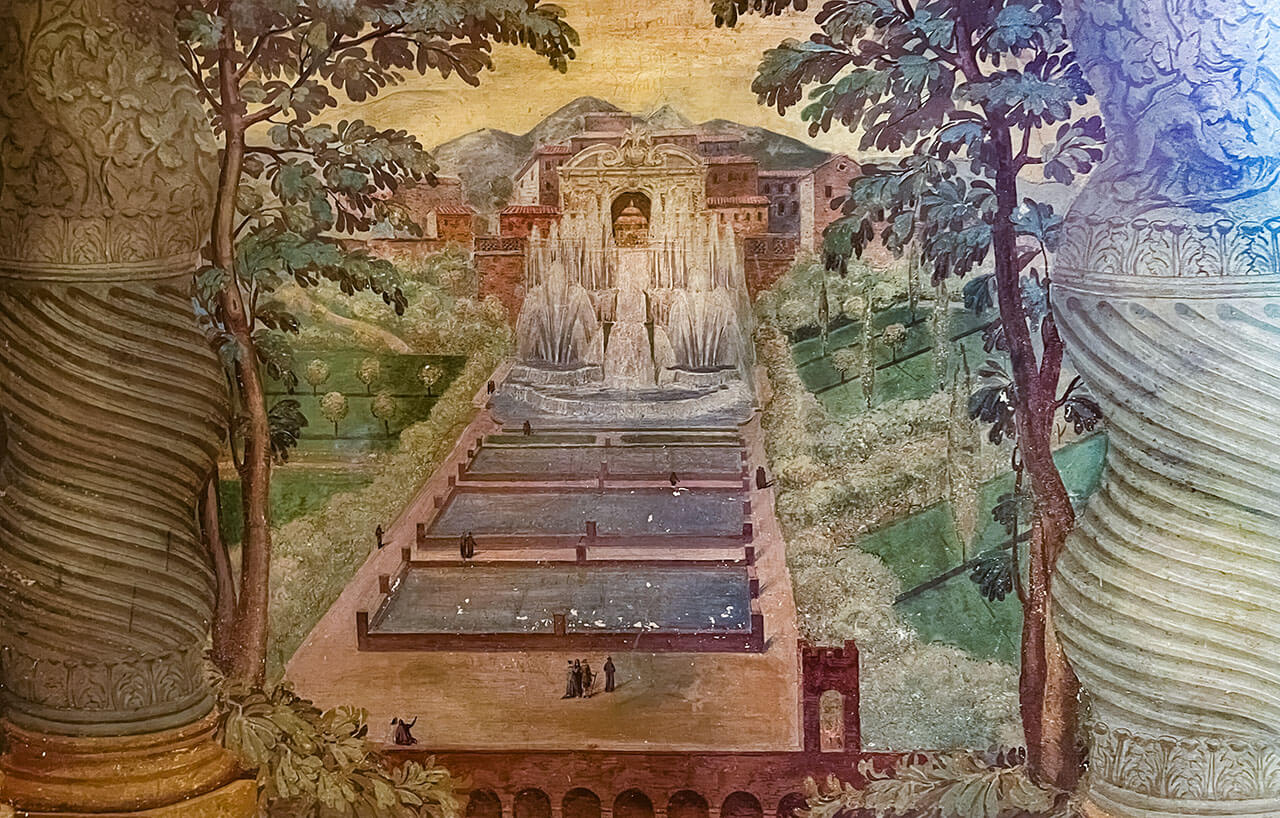
Artistic Highlights and the Influence of Bernini
The intervention by Gian Lorenzo Bernini in the 17th century marked a significant evolution in the artistic narrative of Villa d’Este’s water features. Bernini, one of the masters of the Baroque movement, was renowned for his ability to blend art, architecture, and hydraulics into dynamic spectacles. His work focused on creating a cascade system that incorporated water flowing over intricately designed grottoes and descending into a basin below. This design introduced a dramatic interplay of rock, water, and air, exemplifying the Baroque fascination with movement and transformation. Bernini’s contribution set a new standard for theatrical water displays, evoking awe and emotion through the power of water in motion.
By the 1930s, much of Bernini’s work had fallen into neglect, prompting a complete redesign under Attilio Rossi and Emo Salvati. The modern Fountain of Neptune incorporates high jets and sprays symmetrically arranged around a central cascade, echoing elements of Bernini’s original vision while enhancing the spectacle with contemporary hydraulic technologies.
At the base of the waterfall, a bust of Neptune placed in a grotto gives the fountain its name. This artistic depiction of the Roman god of the sea symbolizes dominion over water and nature’s forces. Combined with the cascading basins and dramatic water displays, the fountain becomes a harmonious blend of artistry and engineering, offering visitors an immersive experience that resonates with the grandeur of Villa d’Este’s Renaissance ideals.
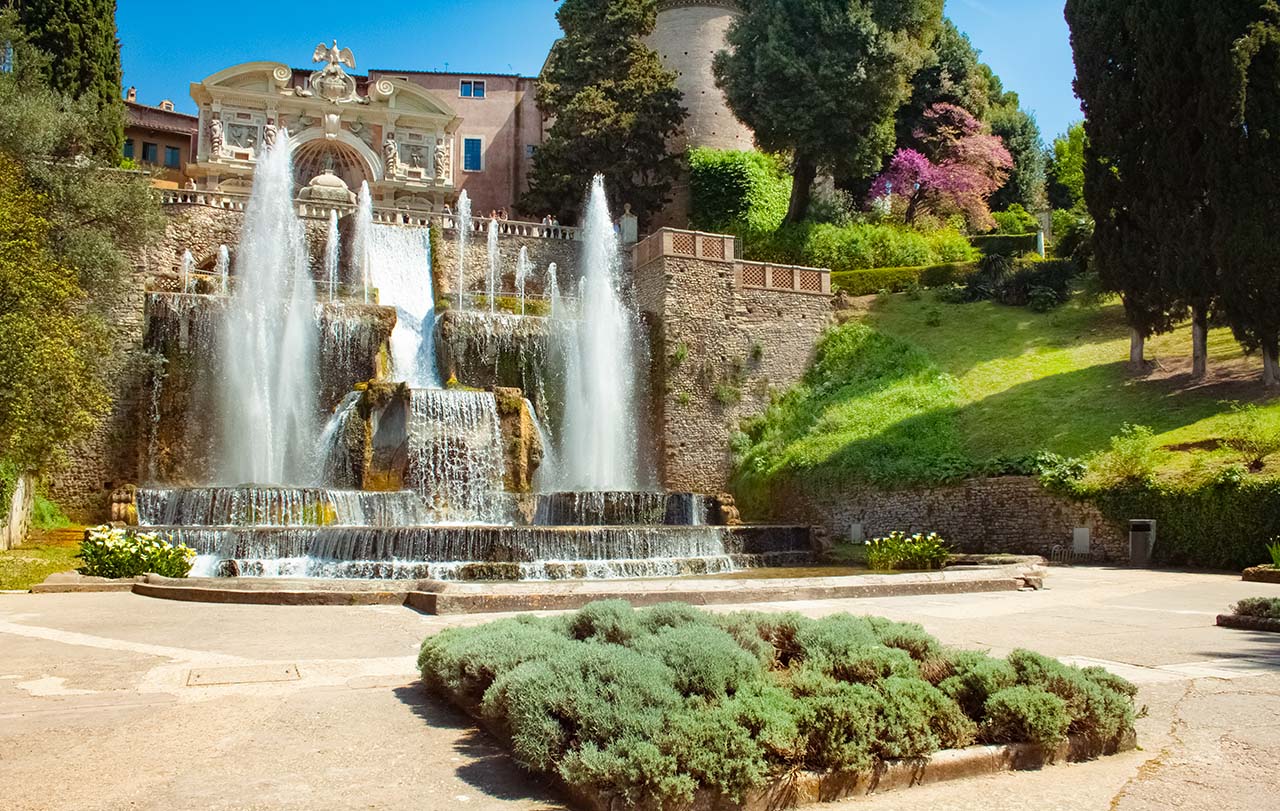
The Magic of Hydraulics at Villa d’Este
The Fountain of Neptune, along with the other fountains at Villa d’Este, owes its breathtaking displays to an advanced hydraulic system, a testament to Renaissance engineering innovation. These systems, though largely hidden from view, revolutionized the manipulation of water, achieving effects in a domestic landscape that were previously unparalleled.
The genius behind this hydraulic marvel was Claude Venard, a French engineer whose expertise was sought specifically for this ambitious project. Venard, a trailblazer in hydraulic engineering, crafted a network of underground conduits that effectively harnessed the waters of the nearby Aniene River. This network, utilizing both gravity and siphoning techniques, distributes water throughout the gardens, powering the fountains with a pressure that was extraordinary for the time.
Venard’s design included an intricate system of viaducts and lead pipes, which not only channeled the river water but also maintained the necessary pressure to animate the fountains’ complex displays. This innovation in hydraulic technology not only served a functional purpose but also added an artistic dimension to the gardens, making Villa d’Este a benchmark in landscape and engineering design.
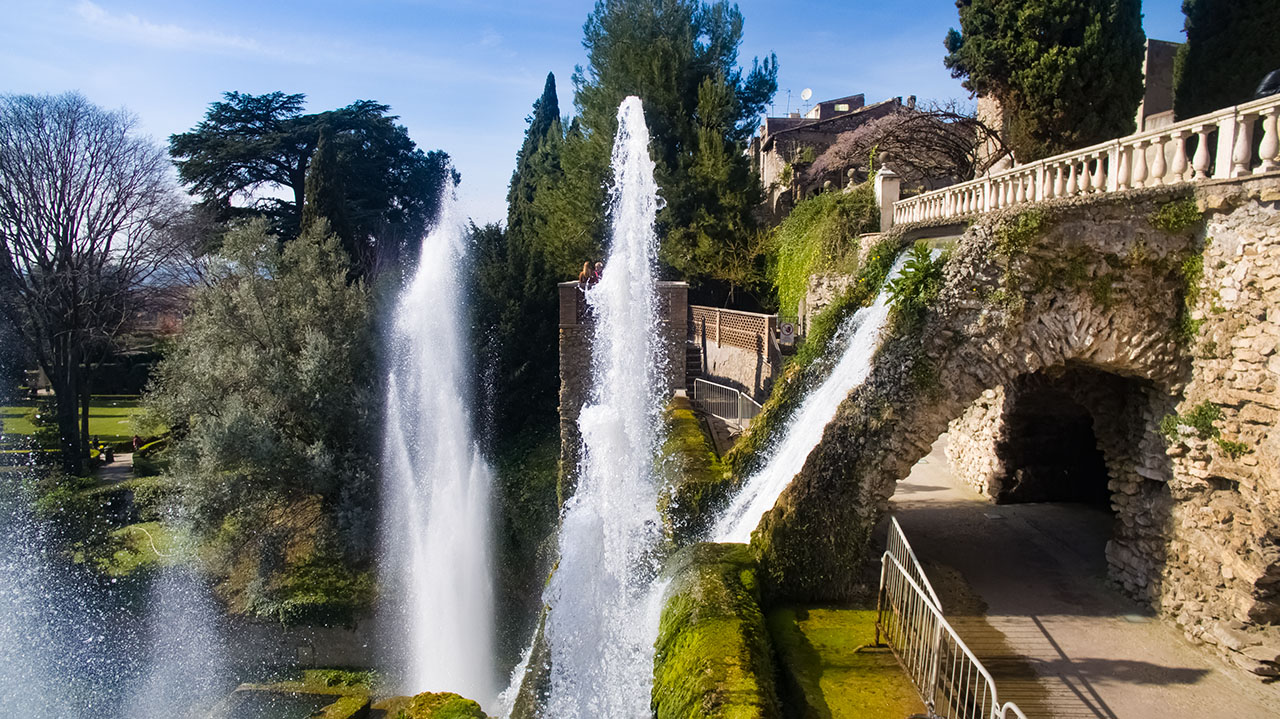
Hidden Conduits and Water Tricks Engineered for Awe
What is particularly fascinating about the hydraulic design at Villa d’Este is the use of hidden conduits and cleverly disguised mechanisms that contribute to the “magical” effects observed in the fountains. These include water jets that are activated by hidden triggers, surprise sprays that appear to operate spontaneously, and the synchronization of water flows with musical rhythms in the Fountain of the Organ, where water pressure itself powers an ancient hydraulic organ, creating music that seems to emanate from the waters.
The Fountain of Neptune, in particular, utilizes a sophisticated arrangement of pressure regulators and sealed chambers that result in the powerful jets and high cascades that are its hallmark. This system was not only technically advanced for its time but was also designed to be adjustable, allowing for variations in the display, which kept the garden’s appeal fresh and surprising for repeat visitors.
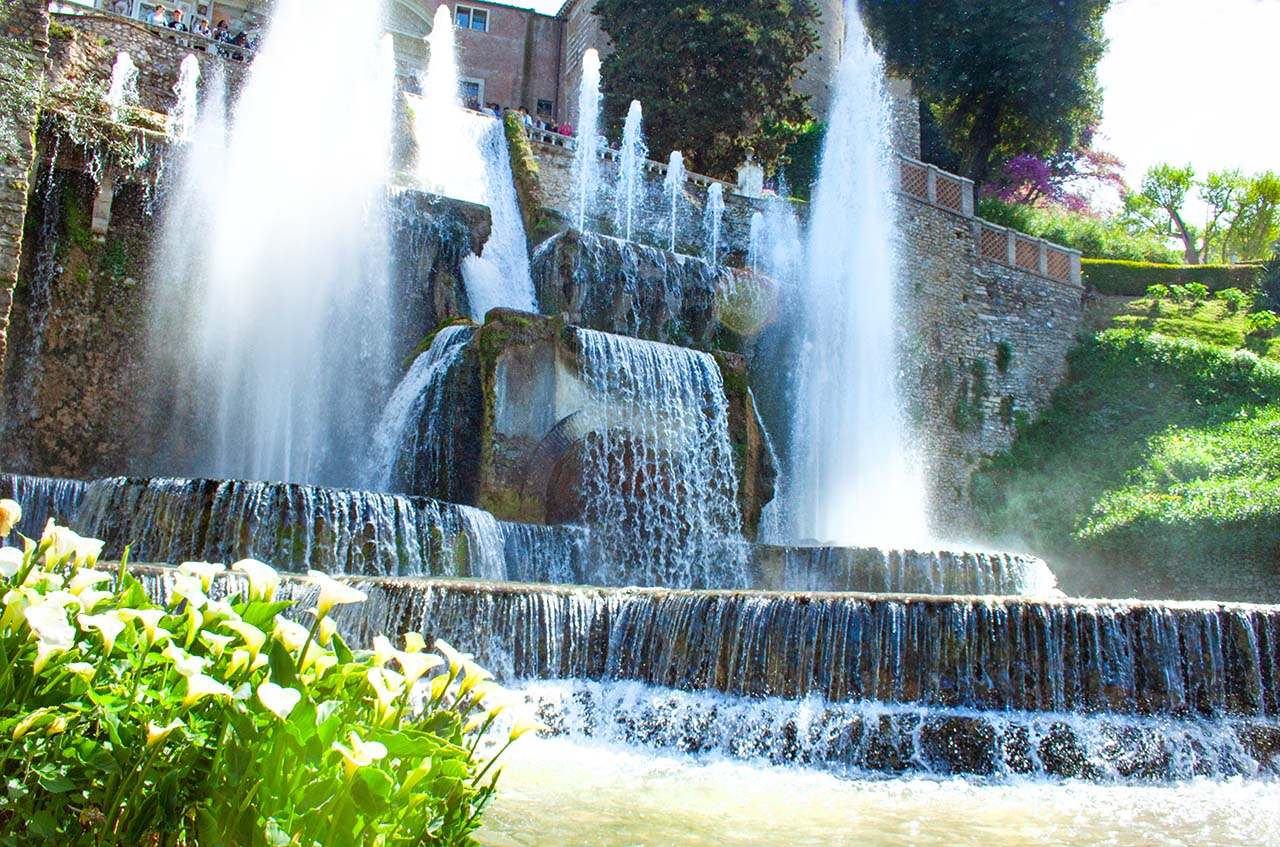
Cultural Significance and Conservation Efforts
The Fountain of Neptune is more than an artistic achievement; it is a cultural symbol that reflects the Renaissance ideals of beauty, power, and human ingenuity. Over the centuries, the fountain has been meticulously maintained, with ongoing conservation efforts ensuring that its historical and artistic value is preserved for future generations. These efforts highlight the challenges of preserving outdoor art exposed to the elements and the commitment required to maintain such a masterpiece.
Visitors to Villa d’Este are consistently awed by the sheer scale and vibrant energy of the Fountain of Neptune. The grandeur of its design and the ballet of water movements create a spectacle that many describe as nothing short of breathtaking. As the water soars and descends, it crafts a captivating soundscape and visual display that mirrors the artistic and engineering prowess of its creators.
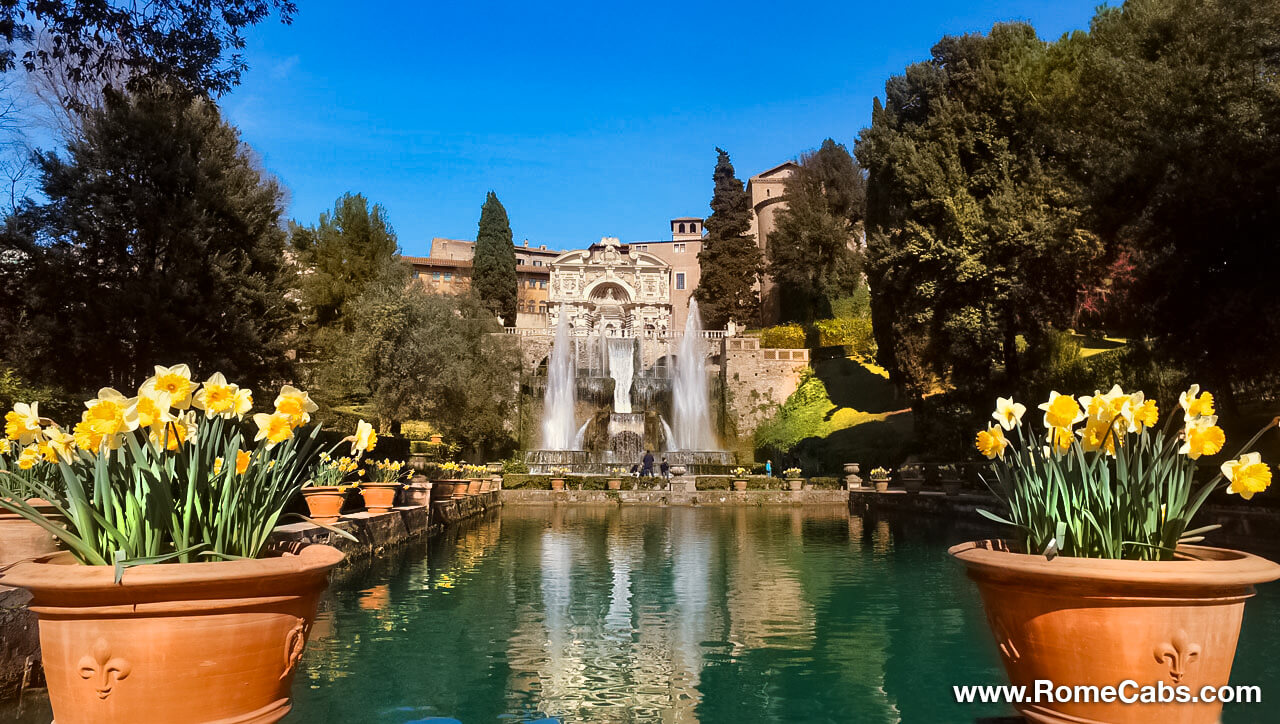
Other Must-See Fountains in Villa d’Este
While the Fountain of Neptune undoubtedly captures the imagination, Villa d’Este boasts an array of other remarkable fountains, each with its own unique charm and historical significance. These fountains not only exemplify Renaissance engineering and artistic creativity but also offer a sensory journey through the splendid gardens.
The Fountain of the Owl: Featuring mechanical owls and other figures, this fountain is an example of early automated sculptures. The owls and figures perform actions synchronized to music, creating a captivating display of Renaissance robotics.

The Fountain of the Organ: This innovative fountain stands out for its unique combination of water mechanics and music. An automated organ within the structure plays music driven by water pressure alone. The organ’s pipes produce harmonious sounds that echo through the gardens, a testament to the ingenuity of Renaissance technology.
The Hundred Fountains: This extensive water feature includes a series of 100 sculpted spouts, each uniquely designed, stretching along a rustic pathway. The spouts, shaped like heads of animals and mythological figures, pour water into a long trough, blending art with the natural landscape.
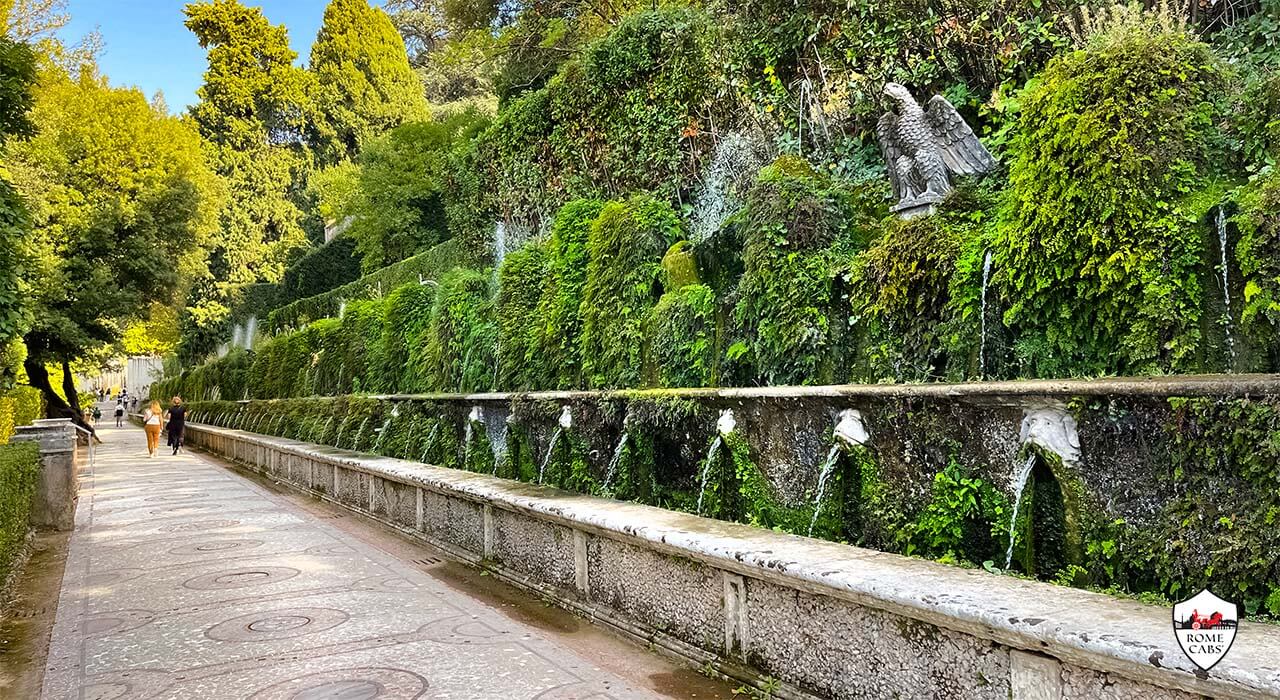
The Rometta Fountain: Often called the “little Rome,” this fountain is a miniature representation of ancient Rome. It includes models of famous Roman landmarks like the Colosseum and the Roman Forum, complete with flowing water mimicking the River Tiber.
The Oval Fountain: Also known as Fontana del Ovato, this fountain features a large oval basin with a sculpted backdrop depicting a Sibyl and nymphs. Water cascades down from overhead vases and spills over steps and through mouths of creatures, creating a serene sound of flowing water.
The Fountain of the Dragons: Symbolizing the power and might of the Este family, this fountain features four winged dragons spouting water into a central basin. It is known for its dramatic outbursts of water, timed to surprise and delight visitors.
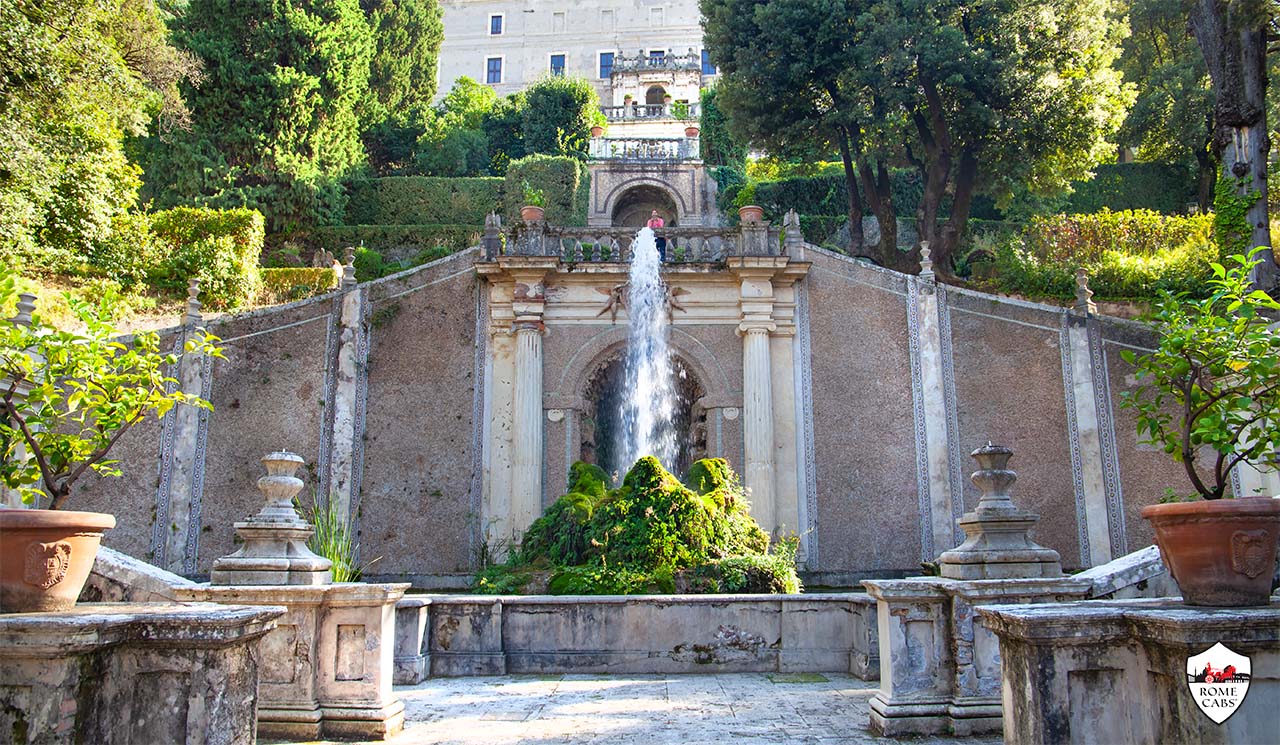
The Fish Ponds: Also known as the Peschiere, these are not just functional elements for breeding fish but also aesthetic features. With their calm waters, they reflect the surrounding architectures and skies, adding a layer of tranquility to the gardens.
The Fountain of the Bicchierone: Designed by Gian Lorenzo Bernini during a later addition to the villa, this fountain features a large sculpted chalice from which water flows gracefully into a shell-shaped basin below, a beautiful display of Baroque artistry.
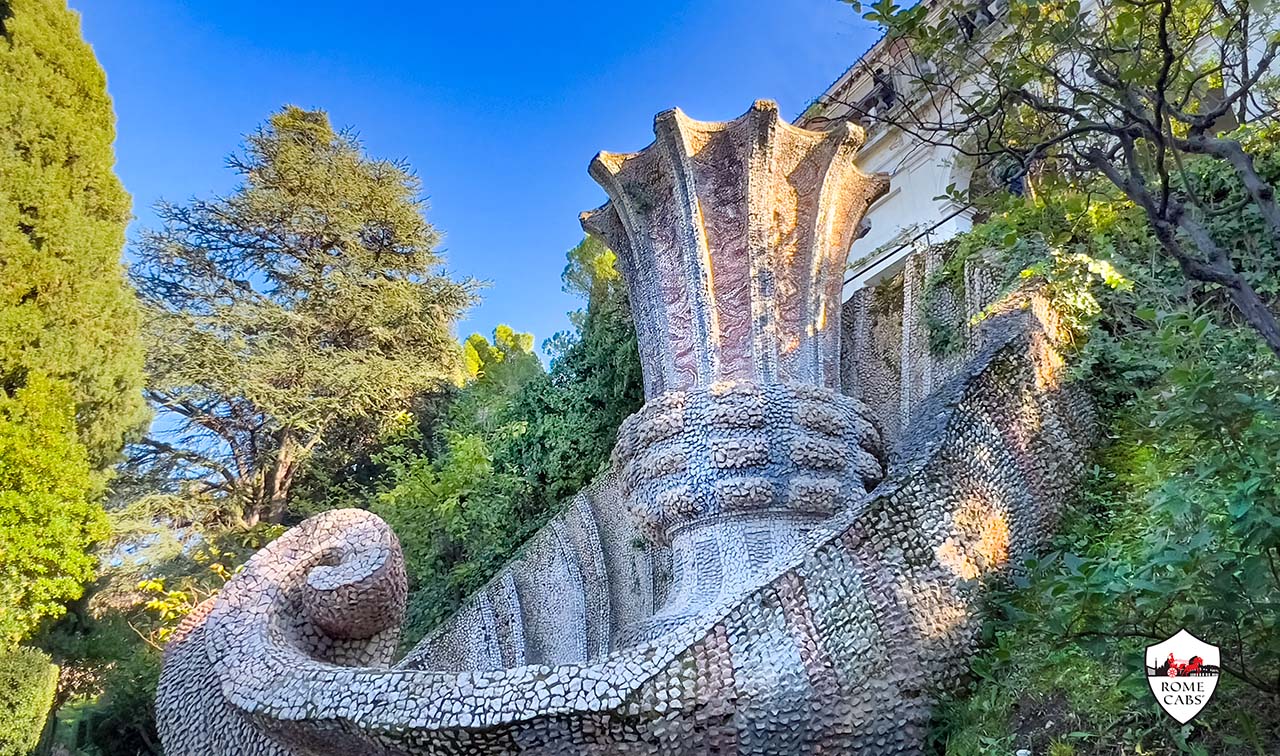
Each of these fountains not only enhances the beauty of Villa d’Este but also serves as a historical document that tells the story of Renaissance art and innovation. Visitors to Villa d’Este are treated to a magnificent display of water engineering that has captivated the imagination of generations, making the villa a timeless symbol of Italian heritage and artistic achievement.
Renaissance Legacy of Villa d’Este
Villa d’Este transcends its physical beauty, exerting a profound influence on the arts and culture that stretches far beyond its famed walls. Since its inception, it has served as a source of inspiration for a myriad of artists, musicians, and writers, each drawn to its unparalleled fusion of natural beauty and architectural mastery. The villa’s innovative design and ornate fountains have been celebrated in paintings, literary works, and musical compositions, echoing through the corridors of European culture.
In 2001, Villa d’Este was designated a UNESCO World Heritage site, a recognition that underscores its significant contribution to the artistic and architectural heritage of the world. This accolade is not merely for its aesthetic achievements but also for its pioneering role in garden design, which has influenced the layout and conception of gardens across Europe. The villa’s design principles, which harmoniously blend water, architecture, and landscape, have set a benchmark in garden aesthetics that continues to inspire contemporary garden design.
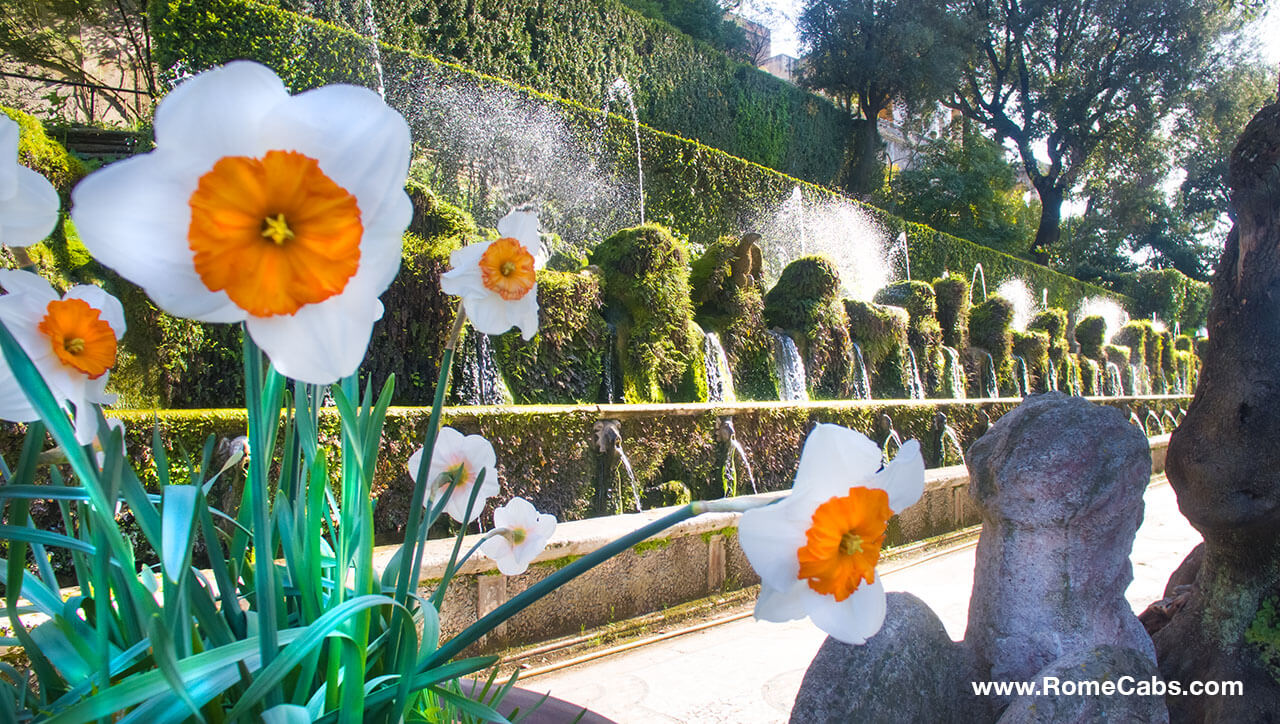
The impact of Villa d’Este is also evident in its role as a cultural beacon during the Renaissance. The villa served as a tangible representation of the Renaissance ideals—combining humanistic values with the pursuit of beauty and knowledge. It was a cultural salon for the elite of the time, where intellectuals and artists from across the continent gathered to exchange ideas and draw inspiration from its gardens and art.
Step back in time and immerse yourself in the architectural splendor of the Renaissance and ancient Rome with a private tour to the enchanting Villa d’Este in Tivoli.
See The Fountain of Neptune and Villa d’Este on Tivoli Day Tours From Rome
Tivoli Villas and Gardens Full Day Tour from Rome
Escape the hustle and bustle of the city and enter the tranquil realm of Tivoli’s historic villas and gardens. RomeCabs’ Tivoli Villas and Gardens Full Day Tour from Rome is perfect for those eager to delve into the rich history and stunning beauty of Villa d’Este and its impressive neighbor, Hadrian’s Villa (Villa Adriana).
Enjoy the insights shared by your knowledgeable English-speaking driver as you explore these iconic sites. In between visiting the grand villas, pause for lunch in Tivoli. This full-day excursion includes the convenience of private transportation, providing comfort and ample time to appreciate the artistic and architectural wonders of Tivoli.
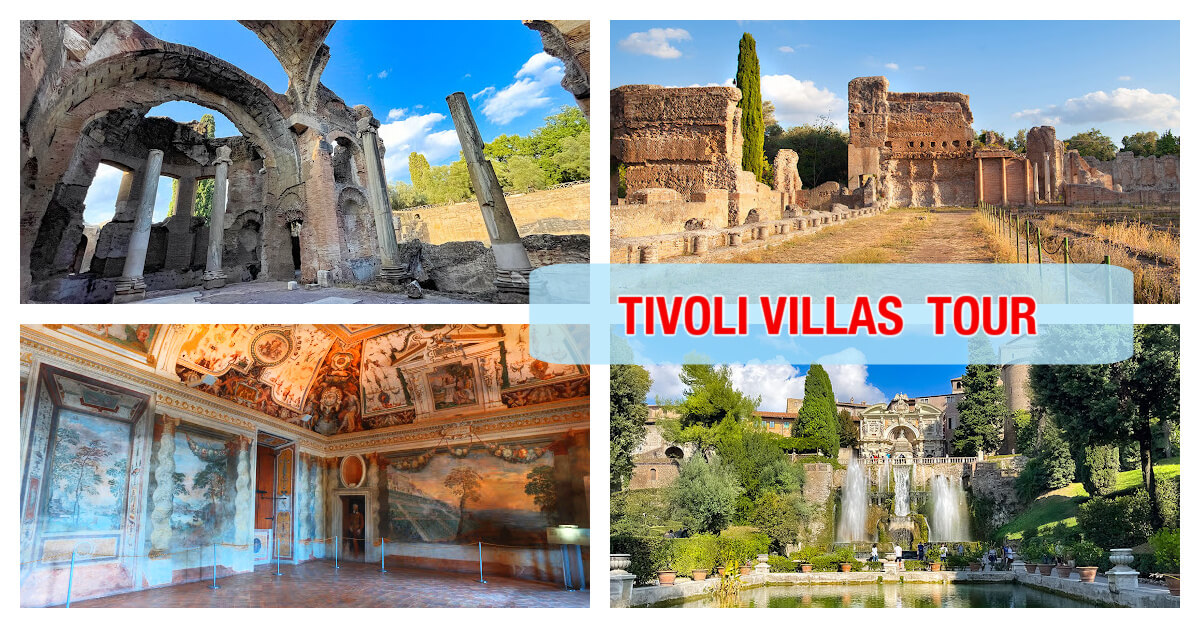
RomeCabs’ Tivoli Villas Post Cruise Tour from Civitavecchia
Enhance your cruise experience with RomeCabs’ Tivoli Villas Post Cruise Tour from Civitavecchia. Specifically designed for cruisers, this tour provides a perfect post-cruise exploration. After disembarking, relax and unwind as we take you through the majestic villas of Tivoli. Visit both Hadrian’s Villa and Villa d’Este, and enjoy some free time for lunch in Tivoli—a memorable addition to your debarkation day.
RomeCabs’ Post Cruise Tours include convenient pickup from Civitavecchia port and drop-off at your Rome hotel, with luggage safely stowed in the vehicle, ensuring a stress-free transition from your cruise.
Why Choose RomeCabs for Day Tours from Rome?
For over two decades since 2004, RomeCabs has been dedicated to delivering exceptional service and unforgettable travel experiences. RomeCabs’ carefully curated tours by car are designed to ensure you enjoy every moment without any hassle. Travel in comfort with our professional RomeCabs English-speaking drivers who provide insightful commentary, and will ensure a fun-filled and comfortable day tour by car.
Book your tour today with RomeCabs and explore the timeless beauty of Tivoli’s historical treasures. Whether you’re an art lover, a history enthusiast, or a traveler in search of tranquility, these tours promise a day of discovery and awe-inspiring sights.
5-Star RomeCabs Reviews: Outstanding Tivoli Tours

Iain P. from UK wrote:
5 star service. More than just an A2B taxi service..
We used RomeCabs for our airport transfers, as well as for a day trip from our accomodation in Rome to the Villa Adriana and Villa d’Este in Tivoli.
Our drivers for all three trips were on time and very polite and helpful. The vehicles were clean and lots of space for our party of 6. Speaking very little italian as I do the drivers were fluent in english and very knowledgable about the area, helping us all understand where we were and some of the history of what we were driving past.

YDV wrote:
Another home run for the creativity of the Rome Cabs team!
Stefano and his team have been my go to company in Rome for over a decade. They always are professional, on time, and in nice vehicles. When I had an unexpected stopover in Rome on my way back from Asia due to flights being reconfigured from a blizzard I contacted them looking for something to fill my time rather than sitting in the airport.
The brilliant suggestion of Tivoli was made and instead of being annoyed about being displaced I was off on a grand adventure! I can’t recommend this company enough, they are the best of the best!
Find RomeCabs also online:
RomeCabs Facebook: https://www.facebook.com/RomeCabsToursAndTransfers
RomeCabs Pinterest: https://www.pinterest.it/romecabs
RomeCabs Twitter: https://twitter.com/RomeCabs
RomeCabs Instagram: https://www.instagram.com/romecabs/
RomeCabs Flickr Photo Gallery: https://www.flickr.com/photos/romecabs/
Discover MORE Of Italy with RomeCabs Italy Blogs
Don’t miss our other blog posts about Rome and Italy! Whether you are looking for Italy Travel Tips, or information on some of must see places in Rome or Italy, we invite you to browse through our blogs.

